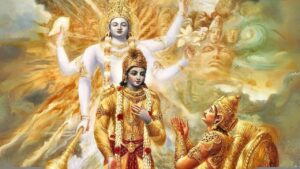ગુજરાત ક્લબ(Gujarat Club): ગાંધી અને સરદાર પટેલની ઐતિહાસિક મુલાકાતનું સ્થળ

ગુજરાત ક્લબની સ્થાપના ૧૮૮૮માં નગરજી માસ્ટરે કરી હતી, જે એક શાળાશિક્ષક હતા. તેઓએ એક આધુનિક, લોકશાહી અને સર્વસમાવિષ્ટ ક્લબ બનાવવાનો સપનો જોયો, જ્યાં જાતિ, પંથ અને લિંગના ભેદभाव વિના લોકો ભેગા થઈ શકે. આ કલ્પના પહેલા સિદી સાહેબની હવેલી (પાનવાલાની હવેલી) માં સાકાર થઈ, અને સમય સાથે બૌદ્ધિક ચર્ચાઓ, કાયદાકીય મંત્રણા અને રાષ્ટ્રીય આંદોલનોનું કેન્દ્ર બની.
ગુજરાત ક્લબનો ઐતિહાસિક મહત્ત્વ ત્યારે વધ્યો, જ્યારે ૧૯૧૬માં મહાત્મા ગાંધીએ અહીં મુલાકાત લીધી. તે Ahmedabad સ્થાયી થયા પછી ક્લબમાં આવ્યા અને સરદાર વલ્લભભાઈ પટેલ સાથે તેમની પહેલી મુલાકાત અહીં થઈ. ત્યારે ગાંધીજી હજુ પણ તેમના કાઠિયાવાડી અંગરખા અને ફેટામાં હતા. તેમણે “સત્યાગ્રહ આશ્રમ” માટે ભવિષ્યની યોજનાઓ વિષે ચર્ચા કરી, જ્યારે સરદાર પટેલ દૂરસ્થ રહી, શંકાસ્પદ દ્રષ્ટિએ ધ્યાનપૂર્વક સાંભળતા હતા – અને પછી ભારતના ભવિષ્યને ઘડનાર આ બે મહાનાયકો એકસાથે આવ્યા.
ગુજરાત ક્લબે સમયાંતરે વિખ્યાત ન્યાયાધીશો, ઉદ્યોગપતિઓ અને સામાજિક સુધારકોને એકત્ર કર્યા. વર્ષો દરમિયાન ક્લબના પ્રમુખ તરીકે આ મહાન વ્યક્તિઓએ સેવા આપી:
- અંબાલાલ સરાભાઈ – પ્રખ્યાત ઉદ્યોગપતિ અને રાષ્ટ્રવાદી, જેમણે અમદાવાદના આર્થિક અને સામાજિક વિકાસમાં યોગદાન આપ્યું.
- કસ્તુર્ભાઈ લાલભાઈ – ગુજરાતની ટેક્સટાઇલ ઉદ્યોગવ્યવસ્થા ઘડનાર મહાન દ્રષ્ટા.
- અમૃતલાલ હર્ગોવિંદદાસ – ઉદ્યોગપતિ અને દાનવીર, જેમણે અમદાવાદના વિકાસમાં મહત્વપૂર્ણ ભૂમિકા ભજવી.
ગુજરાત ક્લબ માત્ર એક સામાજિક મંડળ નહીં, પણ સ્વાતંત્ર્ય સંગ્રામ, નીતિ-નિર્માણ અને સુધારણા માટેનું કેન્દ્ર હતું. આજે પણ અમદાવાદ પર ગુજરાત ક્લબનો ઋણ છે, કારણ કે તે શહેરના બૌદ્ધિક અને રાજકીય વિચારવિમર્શનું પ્રારંભિક કેન્દ્ર હતું.
એક સામાન્ય ટેનિસ અને બિલિયર્ડ્સ ક્લબથી લઈને રાષ્ટ્રીય રાજકીય નેતૃત્વનું પરિસર બનેલા ગુજરાત ક્લબે, ઇતિહાસ રચ્યો અને ભારતના ભવિષ્યને ઘડ્યું.
Gujarat Club: The Historic Meeting Place of Gandhi and Sardar Patel
Introduction
Gujarat Club was founded in 1888 by Nagarji Master, a visionary schoolteacher who dreamt of establishing a modern, democratic, and inclusive club where people could gather irrespective of caste, creed, or gender. His vision took shape at Sidi Saheb’s Haveli (Panwala’s Haveli), which soon became a hub for intellectual discussions, legal consultations, and nationalist movements.
The Historic Meeting of Gandhi and Sardar Patel
The club gained immense historical significance in 1916 when Mahatma Gandhi visited the club after settling in Ahmedabad. It was here that Gandhi met Sardar Vallabhbhai Patel for the first time.
At that moment, Gandhi, still dressed in his Kathiawadi angarkha and pheta, shared his vision for establishing the Satyagraha Ashram. Sardar Patel, watching from a distance, listened intently yet skeptically—unaware that this meeting would spark a relationship that would later shape India’s future.
Prominent Leaders Associated with Gujarat Club
Over the years, Gujarat Club became a gathering place for eminent personalities, including judges, industrialists, and social reformers. Several distinguished figures served as its presidents, such as:
- Ambalal Sarabhai – A renowned industrialist and nationalist, instrumental in Ahmedabad’s economic and social progress.
- Kasturbhai Lalbhai – A visionary who revolutionized Gujarat’s textile industry.
- Amrutlal Hargovindas – A philanthropist and industrialist who played a key role in the city’s development.
Gujarat Club’s Legacy
Gujarat Club was more than just a social space—it was a center for India’s independence movement, policy-making, and progressive reforms. Today, Ahmedabad owes a great debt to Gujarat Club for being an early hub of political and intellectual discourse.
From a simple tennis and billiards club to a powerful platform for national leaders, Gujarat Club has left an indelible mark on history, shaping not just Ahmedabad but the future of India.









**
“Given the Gujarat Club’s role as a cradle of Indian nationalism, how might the political landscape of India have evolved if Gandhi and Patel had never met there in 1916? Could their absence have led to a more decentralized or even federalist India, and what implications would that have for contemporary Indian politics?